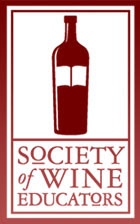 The debate seems unrelenting. “Why do wine critics like Robert Parker and the Wine Spectator have such an enormous impact on the wine industry?” The short answer is “hell if I know.” Seriously, even as a retailer who has spent the better part of two decades immersed in the wine business, I cannot really wrap my head around such a concept. Yet when you sit down and really think about it, it is painfully simple: here in America, we as a people have an extremely short attention span. Generation after generation indoctrinated into the wonderful world of television, with what has often been called the McDonaldization of America going on within and throughout our society, we want people to tell us about something in 30 second increments, and we want to them to really “wow” us in that brief burst of time.
The debate seems unrelenting. “Why do wine critics like Robert Parker and the Wine Spectator have such an enormous impact on the wine industry?” The short answer is “hell if I know.” Seriously, even as a retailer who has spent the better part of two decades immersed in the wine business, I cannot really wrap my head around such a concept. Yet when you sit down and really think about it, it is painfully simple: here in America, we as a people have an extremely short attention span. Generation after generation indoctrinated into the wonderful world of television, with what has often been called the McDonaldization of America going on within and throughout our society, we want people to tell us about something in 30 second increments, and we want to them to really “wow” us in that brief burst of time.When it comes to wine, something entirely subjective and virtually to conceptualize within a tiny sound Byte, how do you do it? Easy, if you think numerically.
Growing up, and participating in the troubled American education system, you always strived to get those A’s and B’s because that could easily be interpreted as success to your family and friends. An A, at least for the majority of my academic life, was a score of 90 out of 100 and up. And while I certainly had some ups-and-downs in school, the majority of the time, I saw a lot of A’s and B’s. Was that necessarily an indication of my intelligence? Not really. If you look at my overall GPA (grade point average) from High School, it was a 2.6. Why? I failed English, technically, even though I passed the exam and received a C if I am not mistaken. What does that say about me? You’d probably have to be a guidance counselor to weigh in on that one. Funny that I would end up with an English degree, and I graduated from college with honors (I was 34 when that happened).
So how does this apply to wine? Well, for starters, as I have bitched and moaned about in the past – the 100 point scale used by Parker (created by him really), the folks at Spectator, Enthusiast, Wine & Spirits, and every other major American wine magazine, is inherently flawed because it grades on body, not on quality. It is a very misleading scale, and one that not many retailers have railed against, because the scale sells wine. Is that wrong? You betcha. What can we do about it? The obvious answer is to stop using the scores. As retailers, we are the ones who have empowered these critics, giving them far too much sway in an industry founded on artistry and nature, and the craft of intermingling the two to create something ethereal, social, and beneficial to our health and well-being. By quantifying wine, a small few of turned something basic yet universally pleasurable into an elitist commodity.
Do I believe the tide is turning? Yes. More and more consumers seem discontent with the wines they buy solely on scores. Yet there are still those caught in the world’s hyperbole, doing everything as quickly and as hectically as possible, giving no time to contemplate the small stuff, leaving those “decisions” up to complete strangers (i.e., Parker, Laube, and their ilk).

The difficulty and the controversy created by these wine scores and how they drive the market is that the customers are being misled, not truly understanding that wine is a product of place, and the natural surroundings of said place. When wines are made for the scores, they are being crafted in a formulaic fashion, just like Coca-Cola®, Gatorade® or Yoo-Hoo®. There is a reason why there are so many different wines out there. Over-reliance on wine scores could very well lead to just a few wines: a Red Wine, a White Wine, a Blush Wine, a Sparkling Wine, etc. Just black letters on a white label, eliminating the need for wine stores, wineries, sommeliers, wine critics, etc., etc. All our wines made in one big factory, created in a completely chemical, monolithic atmosphere, by robot enologists.
Sounds melodramatic, doesn’t it?
The scores have become something of an addiction with retailers, mainly because of the dollars these maniacally orchestrated numbers generate. Yet it takes some diabolical plotting and planning, and some subversive training of one’s floor staff, to get them excited about wines devoid of any type of review or score, and in turn, exciting the clientele, so that one day, we retailers can take back control of what we sell, and help educate our customers in knowing there is more than just one type of wine out there that is good. Small moves, it takes. Small moves.











No comments:
Post a Comment